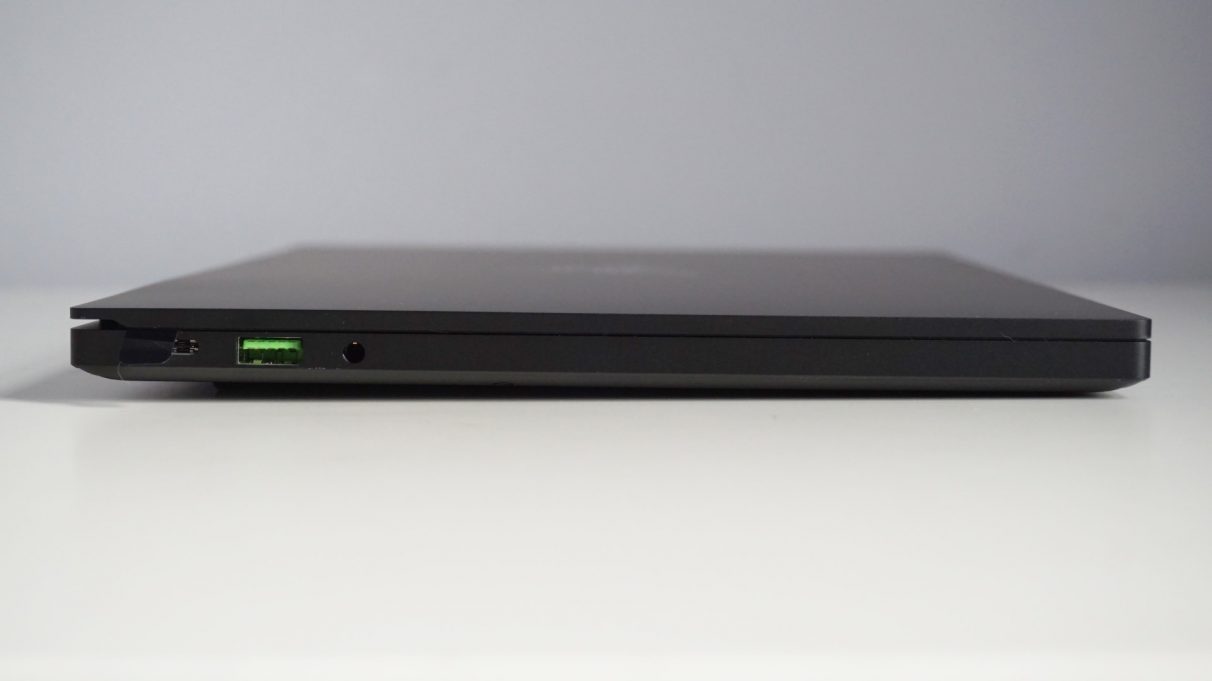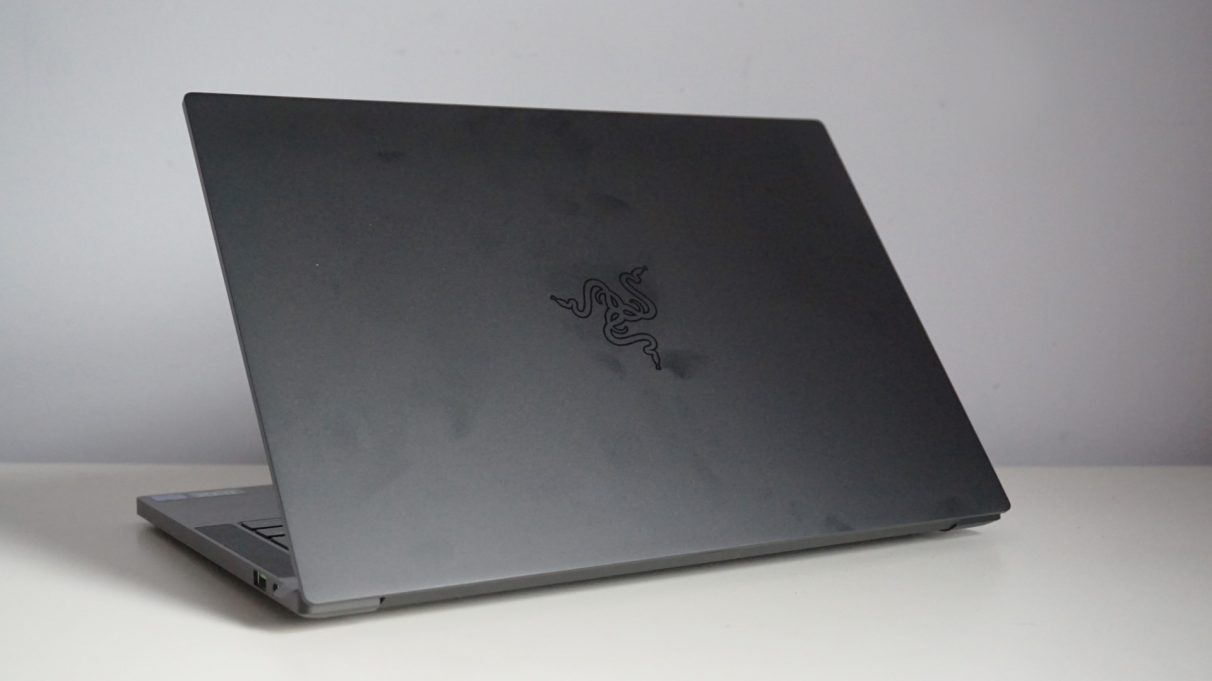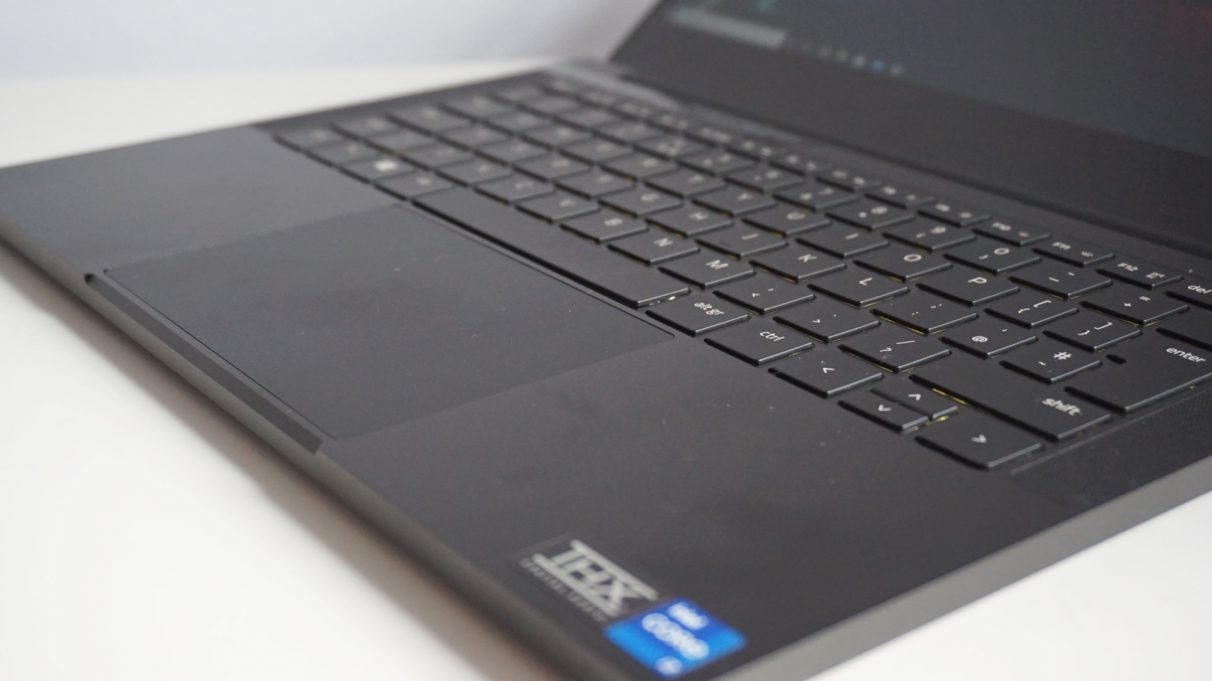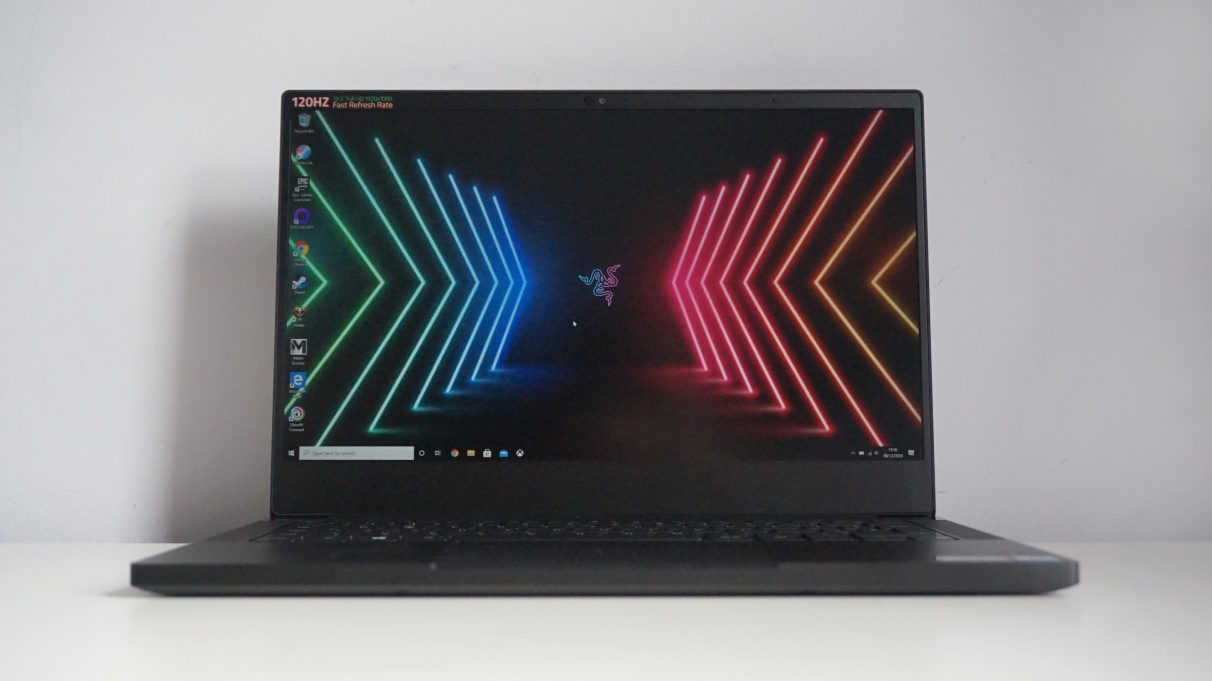Razer Blade Stealth 13 (Late 2020) review
Razer's ultraportable gaming laptop gets a Tiger Lake refresh
When it comes to gaming performance, ultraslim laptops like the Razer Blade Stealth 13 are never going to compete with their larger, beefier brethren. There's neither the room nor the airflow to sustain the kind of components you'd normally find in laptops in this kind of price range, and if all you want is something powerful to play games on that you can sort of move around your house or lug around in a backpack, then there are plenty of larger 15.6in and 17.3in laptops that will do the trick for a lot less. No, the charm and allure of ultraslim gaming laptops like the Razer Blade Stealth 13 lies elsewhere: their size. And man alive if this isn't one of the most gorgeous compact laptops I've ever tested.
As someone who's owned a couple of Dell XPS 13s in her time, I adore this form factor like nothing else. 13.3in laptops are just the most perfect thing. They're way more practical for travelling and working on the go (remember that?) than their larger 15.6in counterparts, and they're so much lighter and easier to move around your own home. Their only real flaw is that they're often missing that one vital ingredient that sits at the heart of our favourite past time: a dedicated graphics chip.
Enter the Razer Blade Stealth 13. Sure, its 4GB Nvidia GeForce GTX 1650 Ti Max-Q GPU isn't going to set the world alight when it comes to playing the latest games, but it's currently the best thing we can hope for in a laptop of this size. And what a diddy little thing it is, too. Its all-metal chassis weighs 1.4kg (beautiful), measures 15mm thick (oh yes) and is utterly silent during everyday operation (perfect). That's a smidge heavier than Dell's latest XPS 13, which weighs an even skinnier 1.2kg, but the Stealth 13 looks and feels just as premium in the flesh - even if it is rather prone to picking up grubby fingerprints inside and out.
What's more, when you combine it with one of Intel's latest 11th Gen Tiger Lake CPUs, the Core i7-1165G7, 16GB of RAM and a 512GB SSD, it becomes a surprisingly potent little gaming machine - especially if what you're after is a little bit of light 3D gaming, and playing your favourite competitive shooter / roguelike / indie game wherever you damn well please - all at 120fps.
Razer Blade Stealth 13 (Late 2020) review in a nutshell
The good...
- Competitive shooters and 2D indie games run beautifully
- Gorgeous 1920x1080, 120Hz display
- Exceptional single-core CPU performance
- Best in class SSD
The bad...
- You'll struggle to hit 60fps on Low / Medium settings in a lot of big 3D games
- Limited ranged of ports
I should note that there are actually two models of the New Razer Blade Stealth 13: the 120Hz model on test here, which was sent to me by UK retailer Ebuyer, and a standard 60Hz version that comes with a fancy OLED touchscreen display (the latter of which is ironically the only model Ebuyer actually have on sale right now). At first glance, the latter might seem like a better fit for what you actually get inside the Stealth 13, and normally I'd agree.
As you'll soon see below, the Stealth 13's GTX 1650 Ti Max-Q GPU often struggles to even hit 60fps in a lot of today's big blockbuster games, let alone push into the realms of 120fps. However, as much as I love a good OLED display (see my Dell Alienware 13 review for more details on why), I'm also firmly of the opinion that playing a game like Hades at a full 120fps feels a heck of a lot more special than paying more (yes, more) for a regular 60Hz laptop. It might be a different story if the 60Hz OLED version was cheaper than its 120Hz sibling, but it's not. It's actually a good £100 / $200 more than the 'entry-level' 120Hz Stealth 13, and I simply don't see the need to sacrifice that lovely high refresh rate when the panel you get here is so chuffing lovely.
Admittedly, Razer don't specify what type of panel you're actually getting on the 120Hz model, but when my X-Rite i1 DisplayPro calibrator tells me it displays an impressive 96% of the sRGB colour gamut, you're almost certainly looking at one of the best IPS screens you can currently get on a laptop. Indeed, that's a heck of a lot higher than your average IPS laptop panel, whose sRGB coverage often comes in at a measly 58% based on other laptops I've tested in the past, and even most of the good ones usually top out at around 85%. Only the best push past the 90% mark, which the Stealth 13 does in spades.
Combine that with a great contrast ratio of 1442:1, a high peak brightness of 382cd/m2 and a low black level of 0.26cd/m2 (the closer to 0.00cd/m2, the better), and you've got one heck of a display. It's the best of both worlds, really, as you're still getting a great-looking screen and a high refresh rate. The OLED might add a little bit more vibrancy and richness to the mix, but even I'm not convinced it would be enough to warrant spending another £100 / $200 on.

As I mentioned earlier, you're certainly not going to be able to play every game in your Steam library at 120fps, and definitely not at its maximum resolution of 1920x1080. However, if your main staples include a lot of competitive online shooters or fast-paced indie games, the Stealth 13 is a real treat. I had no trouble at all getting games such as Hades, Valorant, Fortnite and Apex Legends to run at 120fps at 1080p, and even Playground Games' super glossy racing game Forza Horizon 4 managed a silky smooth average of 73fps at 1080p on High quality settings.
Unsurprisingly, other tough 3D games didn't fare nearly as well in my benchmarking tests, but that's to be expected when you've only got the energy efficient Max-Q edition of one of Nvidia's most entry-level GTX chips. Still, if you're prepared to temper expectations, the Stealth 13 still puts in a pretty good showing in a lot of cases, hitting playable frame rates at 1080p on both Low and Medium quality settings.
In Assassin's Creed Odyssey, for example, the Stealth 13 managed a decent average of 51fps on Medium in its built-in benchmark, while Shadow Of The Tomb Raider's Medium preset came in just behind at an average of 49fps. Both were perfectly playable in-game, too, and neither ever dipped below 30fps, either. Of course, if nothing but 60fps will do, then you'll need to settle for Low in both instances, or drop the resolution to something like 1600x900 or 1280x720.

Sticking with a 1080p resolution for the time being, though, I was also impressed to see an average of 53fps in Total War: Three Kingdoms on Medium - a notoriously tough game for gaming laptops, but no doubt aided by the extra processing grunt of Intel's latest Tiger Lake CPU. Again, 60fps purists will need to knock things down to Low to maintain that coveted speed at all times during play, or settle for a different resolution.
Indeed, there are some games that will definitely feel beyond the scope of the Razer Blade Stealth 13 at 1080p, if only because their respective Low presets look so heinous as to not be worth bothering with. Final Fantasy XV is a prime example, which I wouldn't recommend anyone play on anything lower than its Average quality setting. Here, it managed a decent, if slightly choppy average of 45fps, ranging between 43-48fps as I ran up and down the lush hills of Duscae, which is just about doable if you're absolutely determined to give it a go.
The same goes for Monster Hunter: World's Mid preset, which came in with a near-identical average of 44fps as I sprinted across its opening Ancient Forest environment. Metro Exodus, meanwhile, dipped further still to an average of 40fps in its demanding built-in benchmark on Normal quality, but also hit some nauseating lows of just 20fps in the process. Admittedly, Metro's Low setting is at least a little bit easier on the eyes than either Final Fantasy XV or Monster Hunter: World, in which case its average of 79fps will be a lot more tempting. It's really a case of what you're willing to put up with when it comes to these demanding 3D games, as some will look much better than others (and heck, if you're okay with playing at a locked 30fps for a more console-like experience, say, then there should be a fair number of games should let you push into High settings as well).

Either way, that's still a decent level of performance for such a pint-sized gaming laptop, and pairing it with one of Intel's Core i7-1165G7 CPUs and 16GB of RAM give it plenty of oomph for everyday desktop tasks, too. The Core i7-1165G7 may only have four cores and eight threads to its name, but Intel's new Tiger Lake architecture means this is one seriously nippy processor, with single core performance that outclasses even their fastest 10th Gen Core i7 H-series chip. Previously, the Core i7-10875H inside the £2000 / $2000+ Lenovo Legion 7i had the fastest Cinebench R20 score I'd recorded for single core performance, coming in at 484, but the Stealth 13 blazed past that with a result of 538 - an increase of 11%.
That's impressive considering the Core i7-1165G7 isn't even in the same class of processor as the 10875H. After all, the i7-1165G7 is a super energy efficient CPU that's designed to run at much lower voltages than the high-performance-oriented Core i7-10875H, and is much more likely to be found in ultralight laptops than gaming ones.
Naturally, the Core i7-10875H still comes out on top for multicore performance, offering scores of 3700 over the 1165G7's Cinebench result of 1653, but that's hardly surprising given it has double the number of cores and threads. Besides, unless you're planning on using the Stealth 13 for a lot of intensive photo and video editing (which is probably unlikely, given the size of the screen), you're probably not going to need that extra multitasking performance in the first place. In everyday use, the Core i7-1165G7 still had more than enough grunt for fast, responsive web browsing and editing the odd image for work, and it certainly didn't seem to get in the way of playing games, either.
The 512GB Samsung NVMe SSD Razer have chosen for the Stealth 13 is top notch, too. While you won't be able to install masses of games on it (indeed, I had to stagger my benchmark installations as I couldn't fit all of them on it at the same time), but its read and write speeds are second to none. In AS SSD's 1GB 4K random test, for example, it finished with a read speed of 52MB/s and a super fast write speed of 172MB/s, putting it once again out in front of the SSD inside the Lenovo Legion 7i. While the former was only 8% faster than the Legion 7i's NVMe drive, its write speed gives you a massive increase of 52%. That's quite the jump, and it beats every other laptop SSD I've tested by a similar margin.
The keyboard is a real beaut, too. Despite its flat, chiclet-style keys, each one had plenty of travel and tactile feedback and I actually found it a much more pleasant typing experience than my current XPS 15 laptop. The keys were a lot less spongey than the ones on my trusted Dell, and not once did I find myself second guessing which key I'd actually hit. I found their spacing to be just right, too, and it took no time at all to get up to my usual typing speed. The only thing I really had to wrap my head around was not hitting the power button in the very top right corner - the place I'd normally reach for to use Delete. Thankfully, a quick, accidental tap of the power button won't suddenly send the Stealth 13 into sleep mode or shut it down, so you shouldn't run into too many accidents while you're adjusting the new keyboard.
The speakers are, admittedly, a little disappointing. They try their best, but ultimately they're just too tinny and flat for anything but the most basic of Windows pings. Fortunately, you still get a combined 3.5mm headphone jack to connect a proper headset in the Stealth 13's limited selection of ports, along with two Thunderbolt 4 connections that double up as USB-C ports (although you'll need to keep one free if you want to connect it to the mains) and two regular USB 3.1 ports.
The Razer Blade Stealth 13 is also one of the first gaming laptops I've tested for a while where I've actually been impressed by its day-to-day battery life, too. At 50% brightness with the keyboard's single-zone RGB lighting enabled, I was almost able to do a full day of work online away from a plug socket. It took four hours to get to 50% battery, although this will naturally deplete a lot faster if you start playing games on it, too. Still, if you're looking for a viable workhorse that will get you through a day on the road or even just a long train journey, the Stealth 13 should be able to go the distance with a bit of brightness tweaking and (probably) turning off the RGB backlight.
As I said at the start of this review, there are plenty of other gaming laptops out there that will get you more performance for the same, if not considerably less money. If the fastest frames at the highest settings are what's important to you, then the Stealth 13 isn't the gaming laptop for you. However, as a compact work machine that can also double up as a pretty decent gaming device, Razer's latest ultraportable has plenty to recommend it.
The keyboard alone would be enough to tempt me over in place of another Dell if my larger XPS 15 gave up the ghost tomorrow, and the addition of the GTX 1650 Ti and best in class SSD only seal the deal even further - if only because the ageing GTX 1050 Ti I'm currently stuck with wheezes and whirrs like a rocket taking off when I try to play even the most sedate of indie puzzle games. The Stealth 13, on the other hand, is true to its name in this respect, with its fans barely raising much more than a soft whisper even as it ploughs through the snowy wastes of Metro Exodus. It might not be the most powerful gaming laptop on the planet, but if you want something that's compact, versatile and really rather lovely, the Razer Blade Stealth 13 is well worth considering.




